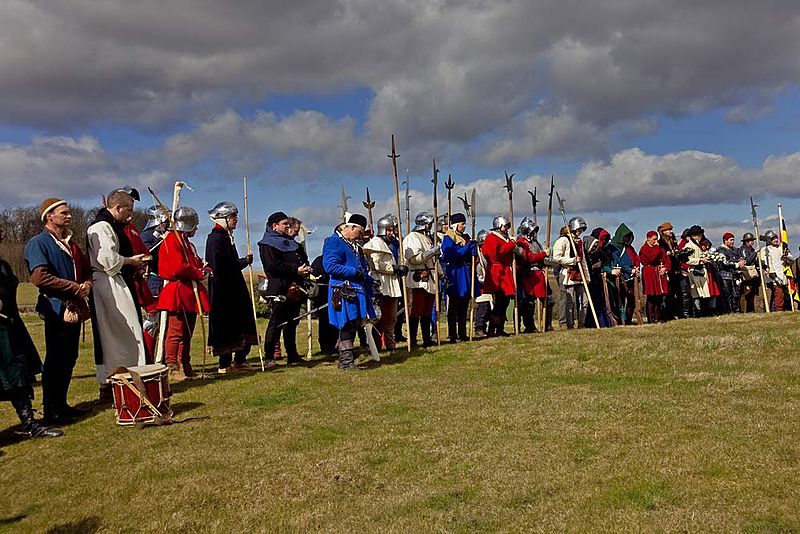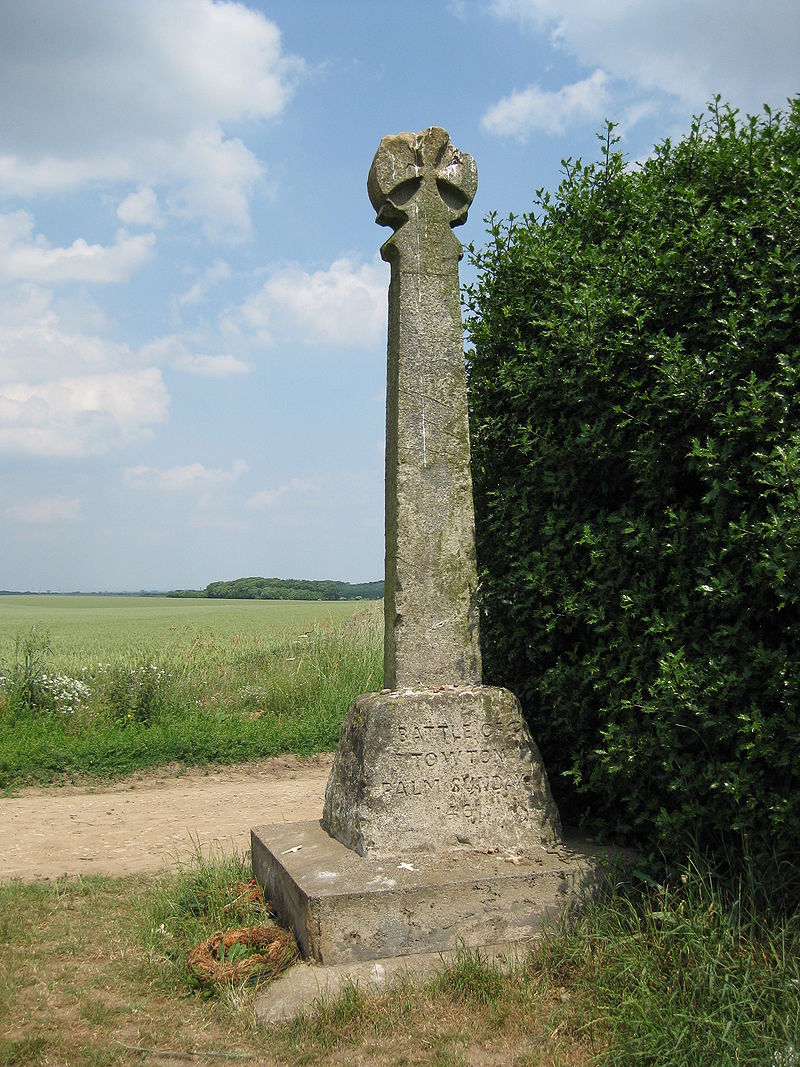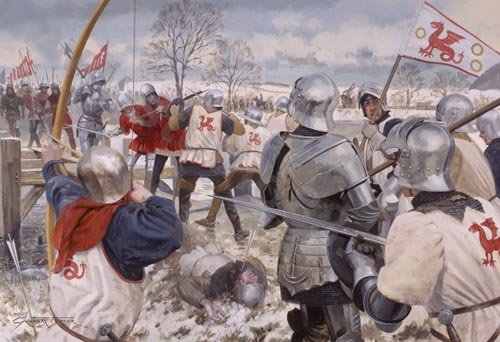The 1461 Battle of Towton is the deadliest ever fought in England, killing 1% of her population
As cities expand, more and more historical sites are disappearing to make room for other uses. Whether the sites are known for bloodshed or discoveries, they are all historically important.
There is one particular battlefield in England that is at risk of being forgotten. The battle took place on Palm Sunday during a blizzard in 1461 at Towton. Historians have said that there were more soldiers who died during this battle than during the Battle of Britain, Dunkirk, and Normandy combined.
The battle proved to be quite deadly and the snow storm was an advantage for the enemy, known as the Lancastrian forces and loyal to Henry VI. The Lancastrians would shoot straight into the snow storm, not knowing what the end results would be, since they couldn’t see their enemy. This proved to be deadly – so much so that the enemies picked up the arrows the Lancastrians shot and sent them back to the Lancastrian side, hitting their targets.
The battle as a whole was interesting and chaotic. There weren’t many prisoners taken and those who died on the field were pushed out of the way in order for both sides to progress through the battlefield. It is said that by the end of the battle nearly 28,000 people had died.
That number may not seem so impressive (compared to WWI and WWII) but when this battle was fought that was nearly one percent of the English population. What is also significant is the fact that it only took one day to kill that many people. There are still arguments among researchers and historians on the number of men killed on the battlefield, but it could nonetheless be the bloodiest battle to ever take place on British land. This battle was a most significant turning point in the War of the Roses; Edward IV took control of the Lancastrian force of Queen Margaret.

Now this site is at risk. Just recently, the battlefield had been plowed to see if any evidence of the battle or any artifacts would turn up. Investigators managed to find one mass grave, but it could be at risk in the near future by having to give way to new housing or roads. If this history that took place here had happened in a building, it would be able to be protected with a preservation order, but the preservation order does not protect plots of land. Many of the buildings in England are protected under the preservation order, making it hard to grasp that the historic battlefield will not be protected. But this is not even the most appalling news as far as ancient battlefields go. Apparently there was no real list or documentation of all of them until 15 years ago. Perhaps some of those battlefields that were never found are already under a building or road.
Thankfully, there are volunteers going around the towns asking for help to preserve the Battle of Towton site. This charity team has paired up with English Heritage in order to encourage volunteer patrols to prevent any more important martial history from disappearing under tarmac. This group will not only protect the Battle of Towton, it will also protect other historical sites all through England and Wales. They will employ groups to do a special kind of neighborhood watch, only focusing on the historical sites. If this team of volunteers proves to be successful, then the preservation group hopes to stretch out into Scotland to do the same.

The English Heritage group is also working towards putting restrictions on unauthorized metal-detecting on those sites, and are waiting to hear if the legislation has been passed in the Government’s Heritage Protection Bill.
Frank Baldwin, chairman of the trust, said that these battlefields are more significant than anyone can imagine. Those past battles are why those people are there today and why they are who they are.
The trust was instituted when the site of the Battle of Naseby was in danger of being bulldozed. After the group got so much publicity, more people were attracted to it. The group ended up getting donations from academics, the public, and archaeologists who all supported the group members and what they were trying to accomplish.
The group and its volunteers have saved 43 sites and have given those sites worldwide recognition. Eight of those areas are not considered at high-risk from threats such as housing projects and looters with metal detectors. Since these sites cannot be protected legally, all the group can really do is tell the local authorities where those sites are located, and campaign against construction on top of those sites.
The group also hopes to have one custodian who will help keep vandalism at bay, since now only 10 percent of the battlefields have volunteers and custodians. They hope to have at least 100 of those battle sites covered, and even archaeologists volunteer on some of those sites because they know the importance of their protection. There are other sites still to be found, such as one in Bath that is known but may never be found.

Want The Vintage News delivered straight to your inbox? Subscribe to our weekly newsletter!
Today, whoever visits Towton, which is near Tadcaster, they would find it hard to believe that they were standing near one of the bloodiest battlefields in English history. The medieval memorial and a pair of crossed swords indicate that something had happened there, however it does not seem like much of a memorial, as if the Battle of Towton were all but forgotten.
